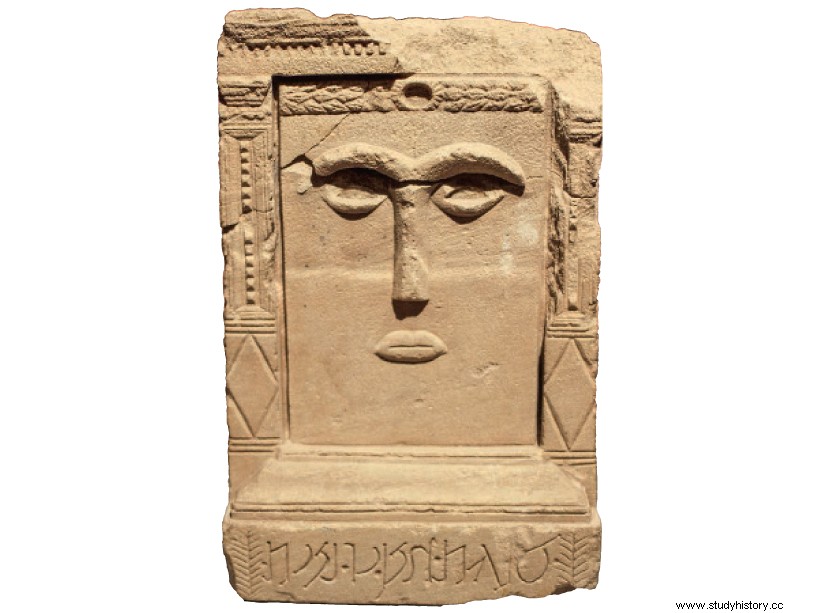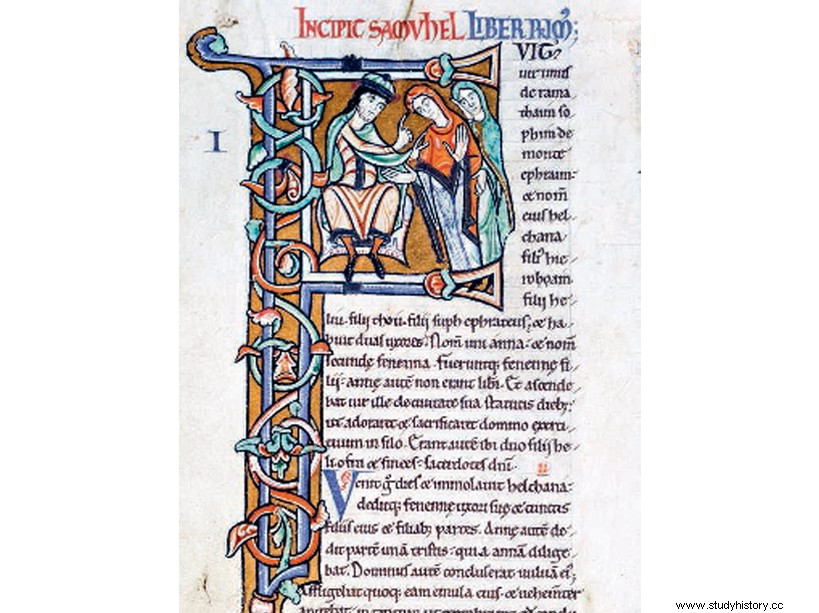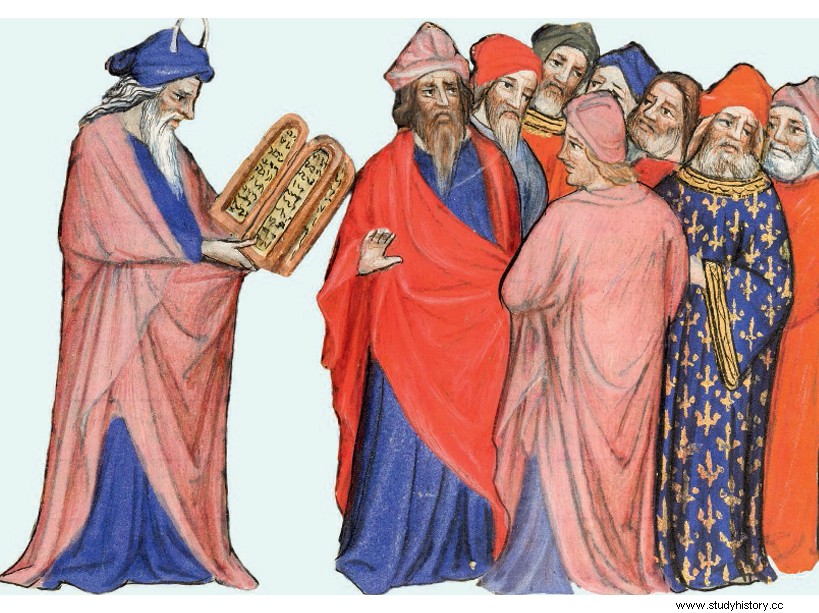The description and the role of the ark of the covenant are very changing according to the accounts of the Old Testament studied. The explanations of specialist Thomas Römer, who has just been appointed head of the Collège de France. This text is taken from Sciences et Avenir 863, dated January 2019.

The cover of Sciences et Avenir 863.
AN ARK OF COVENANT? Yes but which one? An object of fascination, this arôn (“crate”), quoted more than 200 times in the Bible, has always inflamed the imagination… “But if it is often a question of an ark, it is not always the same object ", explains Thomas Römer, a Bible specialist, who sifted through all the sacred texts referring to the Ark of the Covenant as part of a public seminar he led at the Collège de France in 2018. The designation of the relic, cited in the three main biblical sets that are the Torah, the Prophets or the Writings, varies. "There is sometimes talk of the 'ark of the testimony', the 'ark of the covenant' but also the 'ark of Yahweh', the 'ark of God' or the 'holy ark'" , says the researcher. Its description is also very changeable:in Exodus, it is presented as "two and a half cubits long, a cubit and a half wide and a cubit and a half high":a chest of about 1.25 m by 0.75 m and 0.75 m high.
AN ARK OF COVENANT? Yes but which one? Object of fascination, this arôn ("crate"), quoted more than 200 times in the Bible, has always ignited the imagination... "But if it is often a question of an ark, it is not always the same object ", explains Thomas Römer, a Bible specialist, who sifted through all the sacred texts referring to the Ark of the Covenant as part of a public seminar he led at the Collège de France in 2018. The designation of the relic, cited in the three main biblical sets that are the Torah, the Prophets or the Writings, varies. "There is sometimes talk of the 'ark of the testimony', the 'ark of the covenant' but also the 'ark of Yahweh', the 'ark of God' or the 'holy ark”, indicates the researcher.
The only constant:it is a mobile sanctuary that accompanies the Hebrews in their crossing of the desert
Its description is also very changeable:in Exodus, it is presented as "two and a half cubits long, one and a half cubits wide and one and a half cubits high" :i.e. a chest of approximately 1.25 m by 0.75 m and 0.75 m high. The cover will be "of gold, two and a half cubits long, one and a half cubits wide [decorated with] two golden cherubim facing each other". It is then made “of acacia wood”, while Deuteronomy describes it in raw wood, without any gold ornament ever being mentioned. The only constant:it is a mobile sanctuary which accompanies the Hebrews in their crossing of the desert, when, driven out of Egypt, they are in search of a promised land. The role and functions of the ark are equally contradictory, as is the treasure it is supposed to contain. In Exodus (Pentateuch), the so-called ark of the Testimony shelters the tables of the Law, namely the ten commandments that God would have dictated to the prophet Moses. It is said that at each encampment in the Sinai desert, the Hebrews store the ark under a sacred tent. On the other hand, in Deuteronomy, another text of the Pentateuch, it would contain the second tables of the Law, those that God himself would have engraved on stone after the first had been broken.
These would indeed have been destroyed by Moses, furious to see the Hebrews venerating an idol during the famous episode of the Golden Calf. God would then have said to Moses:“Make two tables…I will write the Laws that you broke when you came down from Mount Sinai. » In the Numbers (Pentateuch), the ark is this time a sort of portable house in which Yahweh himself resides, and from which he comes out to fight in the name of Israel. The link between the ark and the war is then unequivocal, in particular in the crossing of Sinai. “Biblical tradition clearly associates the ark with Israel’s ancient wars of conquest” , says Thomas Römer. It is thus present in the legendary episode of the fall of the walls of Jericho:it precedes the seven trumpets that the Hebrews would have sounded to bring down the ramparts of this city whose access was forbidden to them. Finally, the Book of Kings (Prophets) evokes the ark when it is already installed in the Temple of Jerusalem, in what the Bible calls the "Holy of Holies" ( kadosh ha-kadoshim). “It would then have contained two stones placed by Moses” , explains Thomas Römer.
A sort of tabernacle marking the presence of the tutelary god
"If the Bible is not a historical book, it uses elements of various origins, compiled, which must be analyzed by carrying out a kind of archeology of the texts", continues the researcher who has thus managed to forge a certainty:that of being faced with several reinterpretations of a single and same original arch. The latter being the one that passed through the sanctuary of Kiriath-Jearim (Israel) which is mentioned in the book of Samuel (read previous pages):“It is the “primitive” ark of the covenant, which has nothing to do with the one represented crumbling under gold and cherubim. It could be a portable shrine that would have hidden a representation of Yahweh. » In other words, a kind of tabernacle marking the presence of the tutelary god.
You can also admire examples of these portable sanctuaries in the Israel Museum in Jerusalem, or in other museums around the world:they contained statuettes, some of which could even have a face and eyes, intended to be transported, like the betyles, these sacred stones found for example on the site of Petra, in Jordan. But these altars could also contain "foundation stones":"They were buried on the sites of construction of the great sacred sanctuaries everywhere in the Levant, as in Syria or Mesopotamia, and one could find engraved on them the plan of the temples . In the case of the ark, it is perhaps the divine orders that were inscribed, repeating what Yahweh had ordered Moses. » Steles which will be reinterpreted later by the authors of the Bible as the tables of the Law. A hypothesis supported, according to the researcher, by an identical shift proven in the Muslim religion:“There were comparable portable shrines among the pre-Islamic Arab tribes. They housed stone representations of the goddesses al-Lat and al-Uzza. Which were later replaced by copies of the Koran. »
 A betyle could have been contained in the sacred chest (here a betyl dedicated to the pre-Islamic Arab goddess of fertility Uzza).
A betyle could have been contained in the sacred chest (here a betyl dedicated to the pre-Islamic Arab goddess of fertility Uzza).
 Samuel, sent by God, gives David the royal anointing (illumination of the twelfth
th
century), which will make him a sacred sovereign.
Samuel, sent by God, gives David the royal anointing (illumination of the twelfth
th
century), which will make him a sacred sovereign.
 The Ark would have housed the Tablets of the Law entrusted by God to Moses (miniature of the XV
th
century).
The Ark would have housed the Tablets of the Law entrusted by God to Moses (miniature of the XV
th
century).
